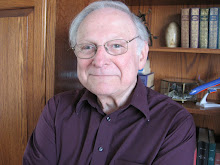 This Victorian image of a young man on a tricycle,
stating that he is on his way to attend the shenanigans, has appeared on
Facebook lately. Although I thought it amusing, I wasn’t precisely sure what
shenanigans were.
This Victorian image of a young man on a tricycle,
stating that he is on his way to attend the shenanigans, has appeared on
Facebook lately. Although I thought it amusing, I wasn’t precisely sure what
shenanigans were.Usually in the plural, shenanigans has two possible meanings. One is not so nice, especially when observed in public officials. It means “trickery, evasion, deviousness, or questionable practices, for underhand purposes.” It’s what a political challenger often accuses the incumbent of being up to.
The other meaning is more fun: “foolery, high-spirited, mischievous behavior.” That’s what I expect the young man in the photograph has in mind.
The word can be traced to 1855 in California, but its etymological origin is highly uncertain.
Some think it derives from the Irish Sionnach uighim, which translates literally as “I act the fox” or “I play tricks.” Others favor a Spanish origin in the word chanada, shortened from charanada, “trick or deceit.” There are those who insist on a German etymology, from Schenigelei, which is peddler’s slang for “work or craft.” And there is at least one linguist who believes the word came from a Chinese expression, which can be transliterated as Shi nan ni gan, meaning “it's hard to catch you.”
Whichever theory you prefer, next time you’re up to shenanigans, just be sure they’re not the malfeasant kind.
So the next time you’re up to shenanigans, just be sure they’re not the malfeasant kind.
The Bard of Buffalo Bayou’s life has been one long shenanigan. And he shows no signs of reforming:
Whenever
Patrick Flanagan
Got
up to some shenanigan,
His
friends would inquire,
Is
he out of the fire,
And
into the frying pan again?

Nice. I shared this on twitter.
ReplyDeleteI'd love to have an entomologist examine the possible connection between shenanigans and Samghnagans.
ReplyDelete""As the Middle Ages progressed, so did the celebrations of the fire festivals. Bonfires known as Samghnagans, which were more personal Samhain fires nearer the farms, became a tradition, purportedly to protect families from fairies and witches. Carved turnips called jack-o-lanterns began to appear, attached by strings to sticks and embedded with coal. Later Irish tradition switched to pumpkins. In Wales, men tossed burning wood at each other in violent games and set off fireworks. In Northern England, men paraded with noisemakers."
Could you tell me how to pronounce samghnagans please? I need to know for a college project
ReplyDeleteshuh-NAN-ee-guns is how I pronounce it.
Delete